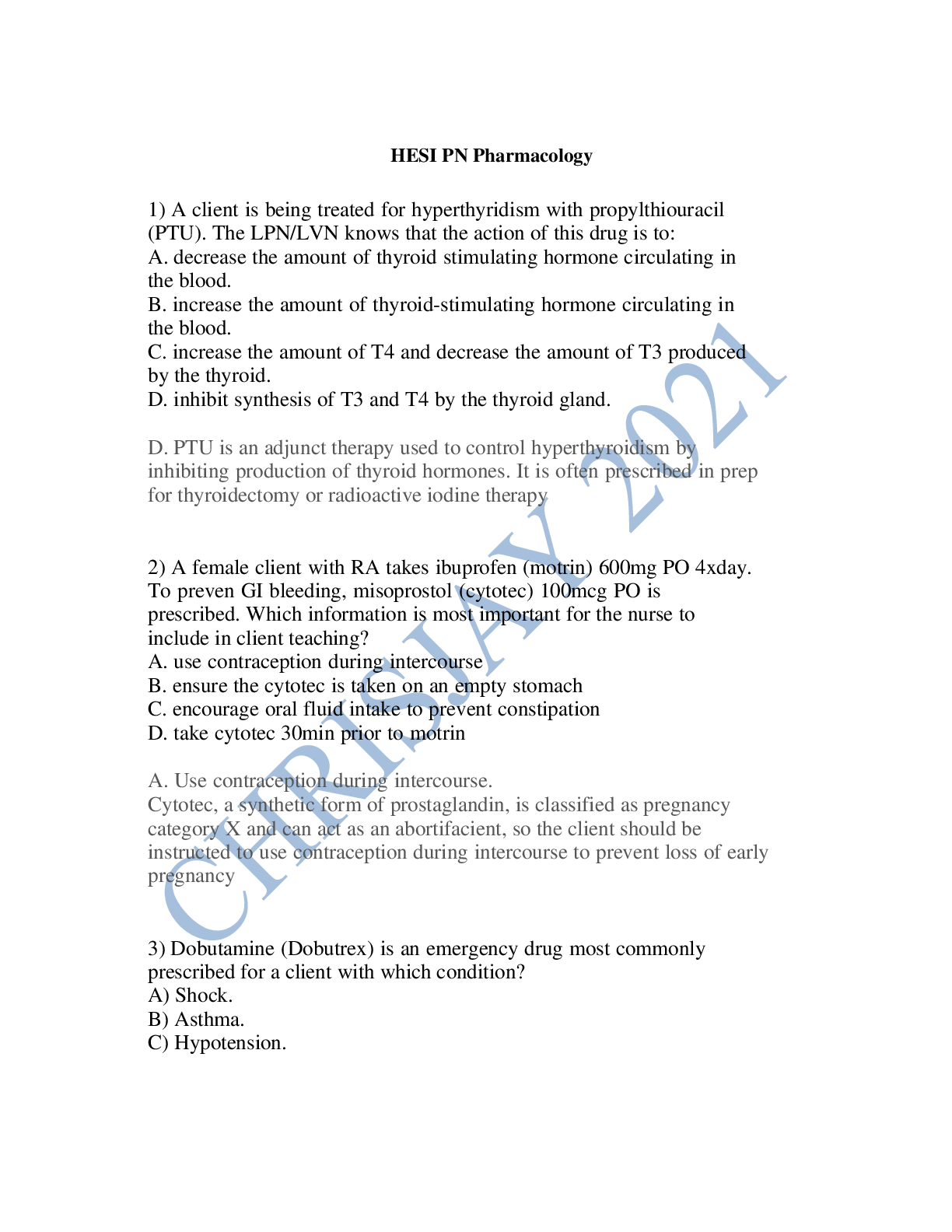MICR 3100. Micro Exam 2: All the Answers Provided. Grade A.
Document Content and Description Below
MICR 3100. Micro Exam 2 1.) What are the components common to all virons? A. Capsid B. Envelope C. Metabolism D. DNA and RNA genomes 2.) When a bacterial cell is infected by a bacteriophage, wha... t happens to the viral capsid? A. It enters the host cell with the viral genome B. It enters the host cell separately from the viral genome C. It is released to attach to and inject another host cell D. It becomes part of the host cell membrane E. It remains on the outside of the host cell 3.) Under what condition would a temperate bacteriophage infecting Staphylococcus aureus (an aerobic bacteria commonly found on the human body) be shifted by environmental cues from lysogeny to a lytic cycle? A. When phage- infected cells are incubated at 37C B. When phage- infected cells are incubated at atmospheric levels of oxygen C. When phage- infected cells are placed on nutrient- rich media D. When phage- infected cells are incubated at 50C 4.) Tropism can be defined as the A. Ability to infect a particular type of cell within the host B. Mechanism of entry into a host cell for bacteriophages C. Emergence of a new type of virus D. Ability to infect a broad range of hosts 5.) A prophage is A. Bacterial virus particle that has not yet infected a cell B. Circular phage genome that promotes cell lysis C. Phage genome integrated into a host genome D. Virus that promotes tumor growth in plants 6.) RNA retroviruses use A. Use restriction enzymes to replicate and transcribe their genomes B. Viral reverse transcriptase to make a DNA copy that is integrated into the host genome and then host RNA polymerase transcribes it C. Host DNA polymerase to replicate their genome and host RNA polymerase to transcribe it D. Viral RNA-dependent RNA polymerase to replicate their genomes and transcribe it 7.) The Baltimore classification of viral genomes is based on A. The composition of the genome B. Whether the virus is enveloped C. The type of organism the virus infects D. The shape of the viral capsid 8.) A marine algae called Emiliana huxleyi can overgrow, creating an algal bloom covering thousands of square kilometers of ocean. As a consequence, these blooms can be devastating to ocean aquatic life. Fortunately, viruses contribute to its life cycle by lysing Emiliana huxleyi, thereby releasing trapped algal ______ and minerals back into the ocean ecosystem. A. Hydrogen B. Oxygen C. Carbon D. Nitrogen 9.) The best-known bacteriophage community is that of the gut virome. A virome is a community of viruses within a host ecosystem (for example, the human or other animal intestinal tract). The gut community receives continual influx of new bacteria and phages while shedding present members. Some prophages of pathogenic bacteria express virulence factors such as the Shiga toxin of Shigella or of E.coli O157:H7, whereas other prophages may protect the gut bacteria from superinfection by some of the many types of phages present in the gut. Identify the evidence provided for the positive effects of phages. A. Phage particles may suppress over-reactive T cells and tumor formation B. Phage infection may increase bacterial susceptibility to antibiotics C. Phages may contribute beta-1,3-galactosyltransferase enzymes for healthy colon function D. Phages may limit bacterial numbers, thus maintaining gut homeostasis E. Phages may attack and erode biofilms such as Pseudomonas aeruginosa 10.) Functional units of DNA sequences include structural genes and DNA control, or regulatory, sequences. Which od the following is an example of a structural gene? A. Sequence that encodes for an RNA molecule B. Promoter sequence C. Transcription factor binding site D. Enhancer binding site 11.) Identify which of the following is not an example of horizontal gene transfer A. A protozoan obtaining a gene that encodes for a metabolic enzyme from a bacterium via phagocytic endocytosis B. A bacterium taking up a virulence gene via transformation C. A bacterium obtaining an antibiotic resistance gene via conjugation D. A protozoan passing on a gene that encodes for a metabolic enzyme to its offspring 12.) Identify which of the following statements are true about an operon A. Multiple RNA molecules are produced by a single operon B. Operons produce monocistronic messages C. All genes in an operon are controlled by a single promoter D. Multiple protein products can be produced by a single operon 13.) Why is there a leading strand and a lagging strand during replication? A. The single stranded DNA binding proteins interfere with DNA polymerase on the exposed strand B. Ligase only operates on one strand at a time C. There is only one sliding clamp assembly D. DNA polymerase only works in one direction 14.) Enzymes that regulate DNA supercoiling are called A. DNA polymerases B. Histones C. Operons D. Topoisomerases 15.) During DNA replication, each new nucleotide adds on to the hydroxyl group on the A. 2’-C of the sugar B. 3’-C of the sugar C. 5’-C of the sugar D. 5’-C of the nitrogenous base 16.) Which of these represent a correct order of proteins involved in bacterial DNA replication? A. DnaA DNA pol lll primase ligase B. Primase DNA pol lll DnaA ligase C. DnaA primase DNA pol iii ligase D. Primase DNA pol lll ligase DnaA 17.) Metagenomics has NOT contributed to which of the following? A. Studies of the microbial life in the Sargasso Sea B. Genetic variation within the genus Prochlorococcus in the pacific and atlantic oceans C. A greater understanding of the bacterial life that cannot be grown in the lab D. Culturing of bacteria from patient samples 18.) The role of the DnaA protein in replication is to A. Recognize the oriC sequence and initiate replication B. Load helicase C. Create an RNA primer D. Create phosphodiester bonds 19.) The semiconservative nature of DNA replication indicates that A. Cells use a somewhat conservative amount of energy during DNA replication B. Newly added nucleotides have been conserved from previous DNA degradation C. Each daughter cell receives one parental strand and one newly synthesized strand D. The mechanism of DNA replication is mostly conserved among organisms 20.) Which of the following is NOT true concerning all plasmids? A. They may contain antibiotics resistance genes B. They may be transmitted horizontally from one bacterium to another C. They may exist in multiple copies in a single cell D. They are always linear DNA 21.) Sigma factors are responsible for A. Helping replicate the DNA helix B. Binding of RNA polymerase to consensus sequences on DNA C. Nonselective binding of RNA polymerase to DNA D. mRNA binding to promoter regions 22.) A bacterial cell that lacked the Rho protein would be A. Unable to terminate transcription of some genes B. Unable to carry out the elongation phase of transcription C. Unable to initiate transcription of some genes D. Resistance to several antibiotics 23.) How is the small ribosomal unit positioned to allow for translation to start at the proper start codon? A. The small ribosomal subunit starts at the far 5’ end of mRNA where the start codon is located B. The start codon sequence is specifically attracted to the P site C. Shine-Dalgarno sequence D. Initiation factors position the mRNA accordingly 24.) When a stop codon is in the A site A. The ribosome subunits immediately separate B. Release factors bind to the A site and activate peptidyltransferase C. The tRNA for the last amino acid of the protein binds to the A site D. Nothing binds to this site and the peptide is released 25.) In a mutant E.coli strain, a protein that normally resides in the inner membrane is mislocalized in the cytoplasm. All other proteins show normal localization. The defect in this strain is that the A. Sigma factors that helps transcribe this protein is missing B. Amino terminal signal sequence is missing C. Signal recognition particle is missing D. Ribosomes in this cell are defective 26.) The SecA dependent secretion pathway delivers proteins to the A. Nucleoid B. Cell membrane C. Periplasm D. Cytoplasm 27.) When a genome is annotated, it means that A. The entire sequence of the genome is known B. An attempt has been made to locate all the genes in the genome C. The number of base pairs in the genome has been determined D. The organism containing the genome can be grown in the lab 28.) Which of the following is not a chaperonin? A. DnaK B. GroEL C. GroES D. DnaC 29.) The statement “codons are redundant” refers to the fact that A. Most amino acids are specified by more than one codon B. The same codon always appears twice in a row in an mRNA C. Most codons can specify more than one amino acid D. Most codons are used more than once in a given mRNA molecule 30.) A “mosaic” genome refers to one that A. Has sites where double-stranded breaks are constantly being made and rejoined B. Undergoes crossover during meiosis C. Contains large segments of DNA from different sources and events D. Is decorated with DNA-binding proteins E. Contains segments of dsRNA interspersed with DNA 31.) All of the following are potential mechanism of horizontal gene transfer except A. Specialized transduction B. Generalized transduction C. Transformation D. Binary fission E. Conjugation 32.) Which of the following occurs during bacterial conjugation? A. The genome is duplicated and then diverges B. A bacteriophage packages its capsid with degraded host DNA then infects a new host, delivering the previous host’s genes C. An insertion sequence finds a target site on another DNA strand then uses recombination to insert itself into that strand D. An F+ plasmid transfers via rolling circle replication through a relaxosome to an F- cell. 33.) While horizontal gene transfer can be beneficial, there are also risks. Bacteria protect themselves from foreign DNA through A. Transposable elements disrupting any transferred DNA B. DNA repair mechanisms protecting the genome C. Restriction endonucleases that cleave unmethylated DNA at specific sites D. Recombination 34.) The crispr system A. Facilitates recombination through a complex system of proteins and clustered repeats B. Is a type of immunity that directs degradation of foreign DNA upon repeat exposure C. Unwittingly replicates bacteriophage DNA D. Randomly causes double-stranded breaks in any incoming DNA E. Promotes horizontal gene transfer following exposure to antibiotics 35.) In the basic Ames test for mutagenesis, a mutagen is tested to see if it can produce colonies on basic medium that ___ histidine, starting with a ___ strain of bacteria. A. Includes; hisG mutant B. Includes; wild-type C. Lacks; wild-type D. Lacks; hisG mutant 36.) One sign of horizontal gene transfer is A. A GC base ratio different from flanking chromosomal DNA B. Gene duplication C. Pathogenicity via gene loss D. Uniform codon usage throughout the genome 37.) If DNA polymerase incorporates a wrong nucleotide during DNA synthesis, A. A protein sequence must be different, in which case a mutation is inevitable B. Methyl mismatch repair will correct the methylated daughter strand to match the unmethylated temple strand C. Methyl mismatch repair will correct the methylated daughter strand to match the methylated template strand D. DNA polymerase never incorporates the wrong nucleotides; it is 100% accurate and error free 38.) Replication transposition differs from nonreplicative transposition in that A. Replicative transposition uses transposase and nonreplicative transposition does not use transposase B. Only replicative transposition occurs in prokaryotes; nonreplicative transposition is found in both prokaryotes and eukaryotes C. Replicative transposition causes cell division D. Only replicative transposition results in the insertion sequence appearing in the new host DNA, while still remaining in the original DNA site. 39.) Genes can be lost during genomic evolution through A. Mutation B. Transposons leaving and taking the genes with them C. Duplication and divergence D. Lack of repair to the gene when it is no longer needed 40.) The above illustration shows an example of a (N)_____ mutation that results in a ___ mutation. A. Transition, Missense B. Insertion, frameshift C. Inversion, nonsense D. Deletion, silent 41.) In addition to acquiring genes via conjugation, transduction, and transformation, natural selection may also favor loss of genes from an organism’s genome. In which of the following bacteria would you most likely expect to find evidence of beneficial genome reduction? A Opportunistic pathogen B Obligate intracellular pathogen C Aquatic stalked bacterium D Free-living soil bacterium E Harmless gut commensal 42.) Allovibrio fischeri produces a luminescent protein but only when a threshold number of these cells are present. This occurs because the bioluminescent protein is induced A. By the presence of moonlight B. By quorum sensing of an autoinducer produced by all cells present and allowing persistence and activation of the operon C. By derepressible repression of the lux operon D. When the cells are in low densities and need to find each other 43.) An inducer causes gene expression by binding A. An activator protein to remove it from the DNA B. A corerepressor protein C. A repressor protein to remove it from the DNA D. Directly to a consensus sequence on DNA 44.) A feature common to all control mechanism is: A. Quorum sensing B. Phosphorylation cascades C. Ability to sense that something inside or around the cell has changed D. House keeping enzymes E. Increased or decreased gene expression 45.) Lac operon is activated by all of the followings, EXCEPT; A. Low cAMP level B. High lactose level C. Low glucose level D. Binding of inducer to repressor protein 46.) In attenuation occurring at the trp operon, the ribosome will pause at the leader sequence when A. Tryptophan levels are low B. Tryptophan levels are high C. araC binds to the leader sequence D. the ribosome never pauses at the leader sequence 47.) One advantage to using sRNAs to control protein expression is that A. Transcription of the sRNA is not needed, thus saving nucleotides B. Translation of the sRNA is not needed, thus saving amino acids C. sRNA is not specific, so many proteins can be downregulated at once D. they cannot damage the DNA, being made of nucleotides as well 48.) In a two-component signal transduction system, the _____ senses a change in the environment and the ____ changes gene expression. A. Sensor, inhibitor B. Sensor, inducer C. Sensor, response regulator D. Regulator, initiator 49.) In E.coli, eight enzymatic steps are involved in the biosynthesis of arginine from glutamate. The synthesis of the required enzymes is subject to control by the ArgD protein, which, on its own, binds weakly to a regulatory sequence just downstream of the promoter regions for these genes. Upon the addition of excess arginine to the growth medium, the respective mRNA molecules are no longer produced. What is the likely role of arginine in the control of these genes? A. Repressor B. Operator C. Inducer D. Activator E. Corepressor 50.) Genes for which of the following functions would be constitutively expressed in a bacterial cell such as E. coli? A. Heat shock B. DNA replication C. Virulence D. Nitrogen limitation E. Osmotic stress [Show More]
Last updated: 2 years ago
Preview 1 out of 8 pages

Buy this document to get the full access instantly
Instant Download Access after purchase
Buy NowInstant download
We Accept:

Reviews( 0 )
$9.00
Can't find what you want? Try our AI powered Search
Document information
Connected school, study & course
About the document
Uploaded On
Sep 21, 2020
Number of pages
8
Written in
Additional information
This document has been written for:
Uploaded
Sep 21, 2020
Downloads
0
Views
136

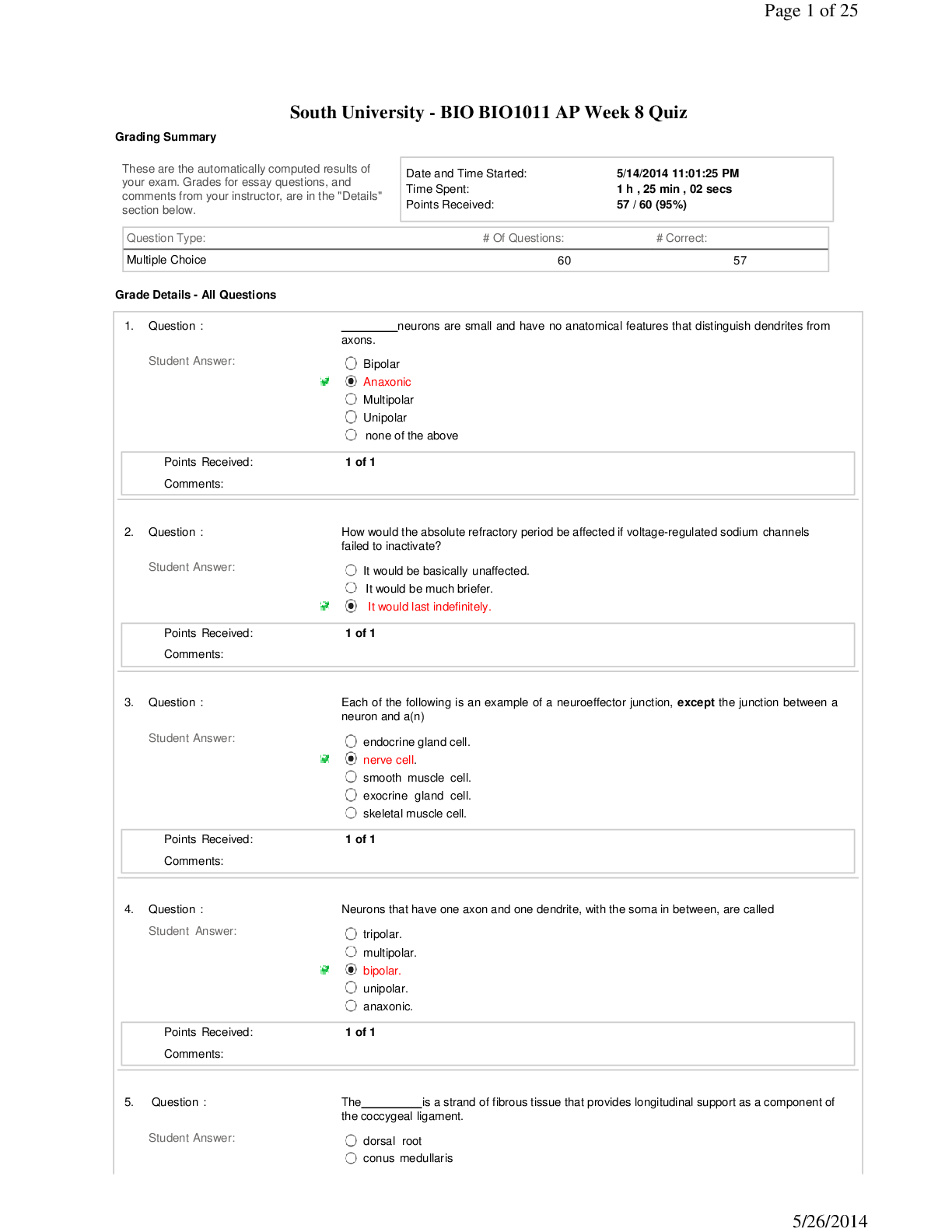
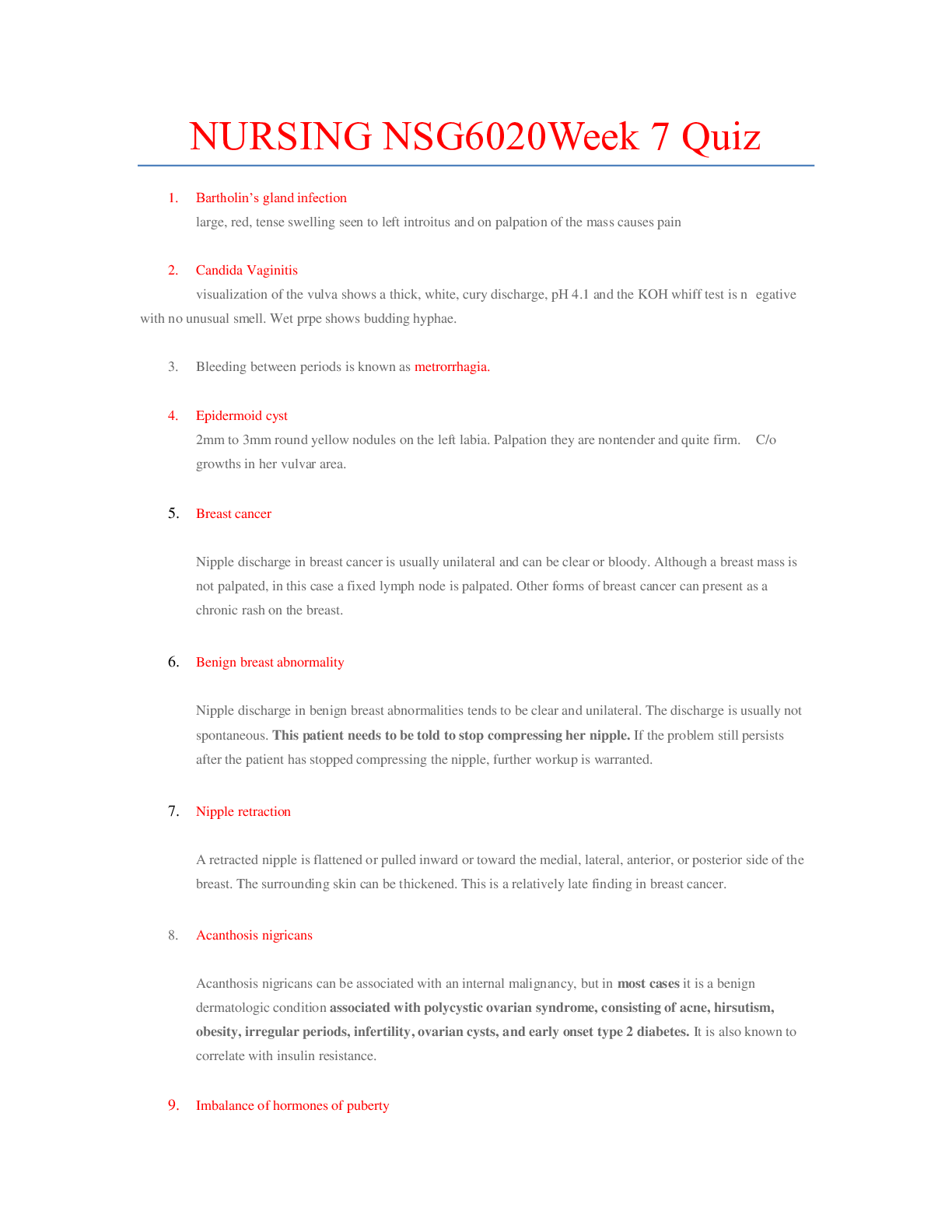
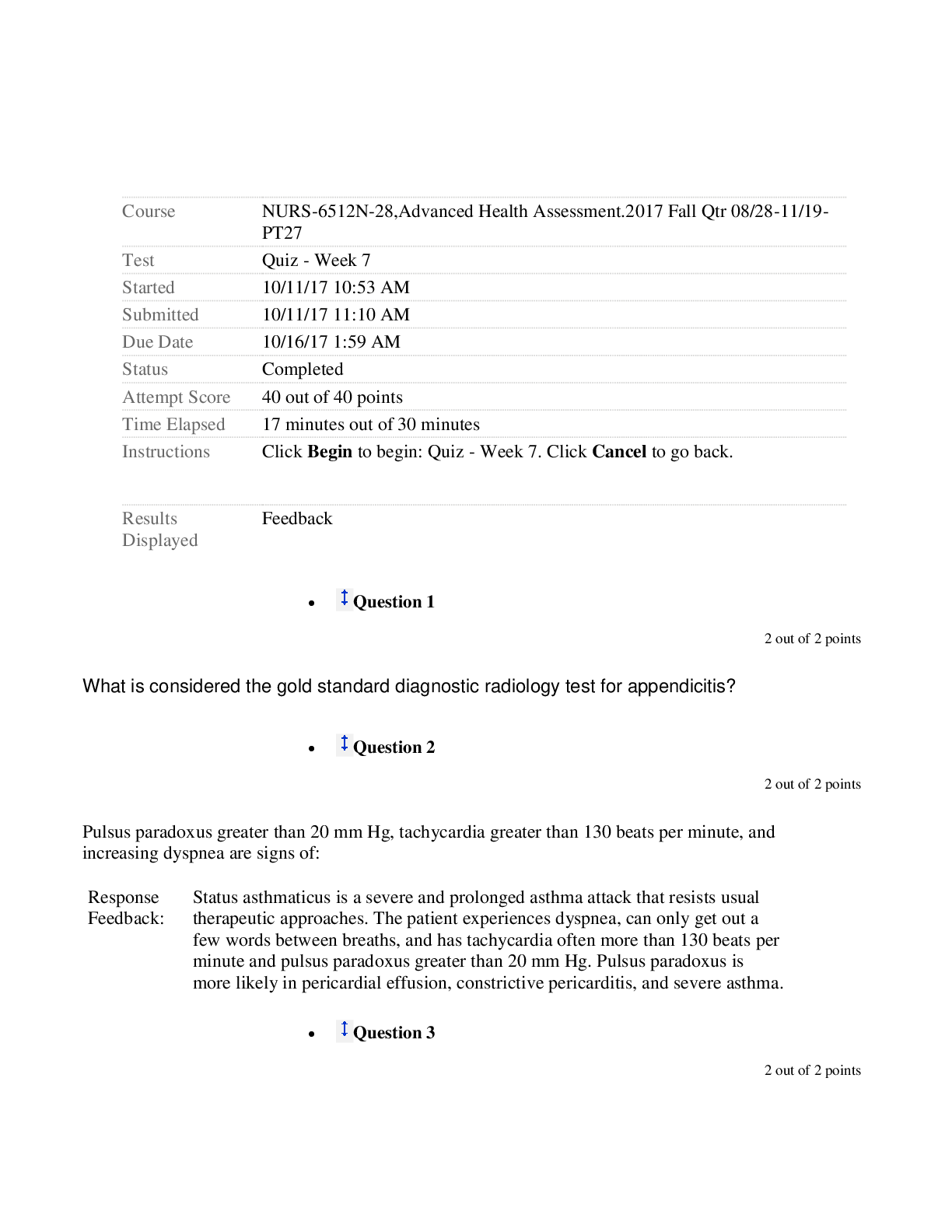



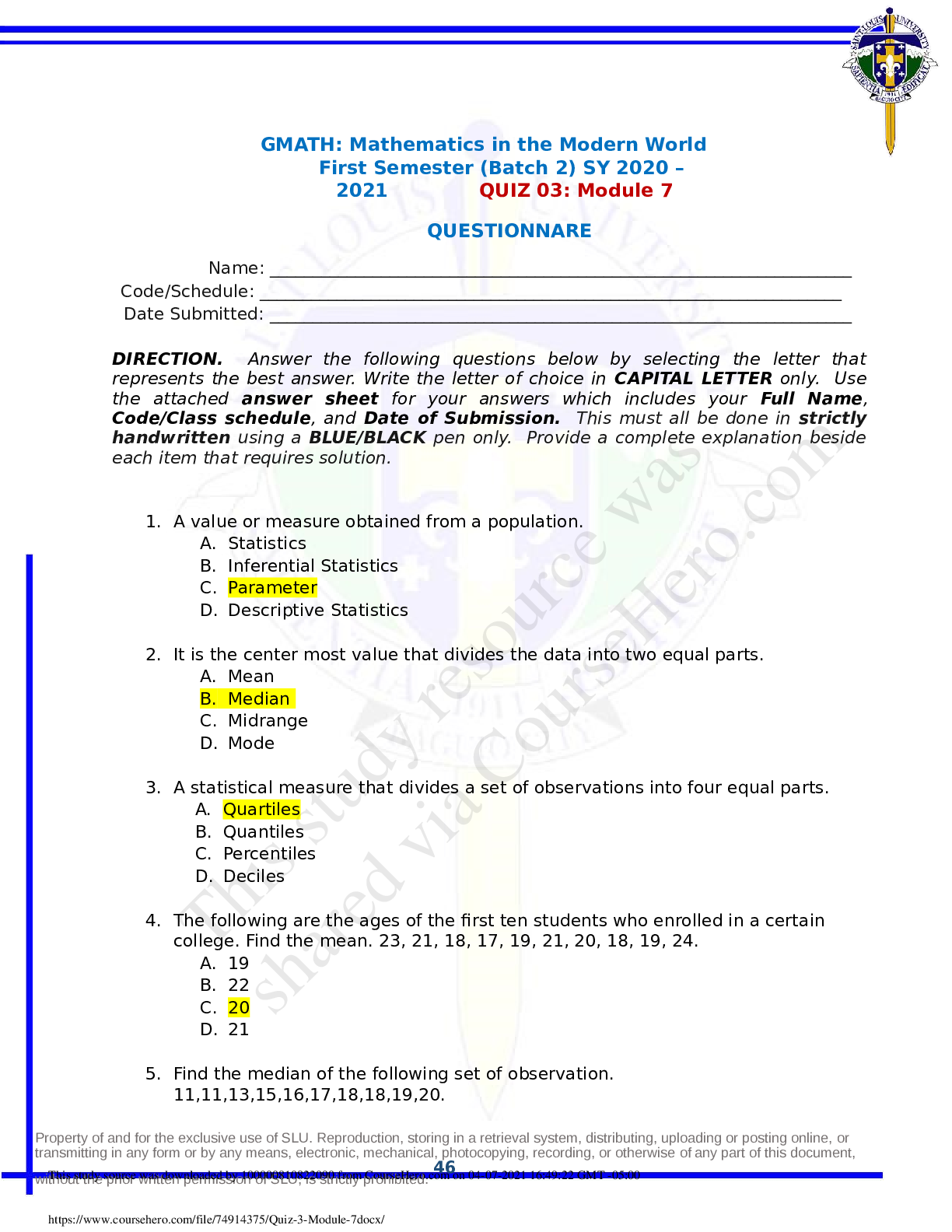



.png)











